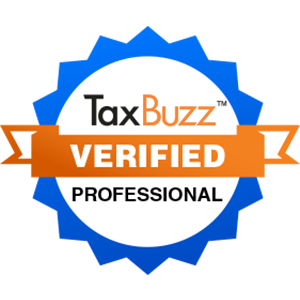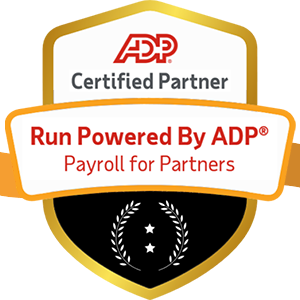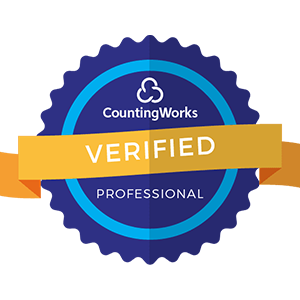
In the ever-evolving landscape of Human Capital Management (HCM), staying ahead of the curve isn't just a competitive advantage—it's a necessity. As we navigate through 2024, one factor stands out as a game-changer for payroll and HR professionals: legislation. From small businesses to Fortune 500 companies, the impact of new laws and regulations is sending ripples across the industry, transforming how we manage our most valuable asset—our people.
But here's the thing: while change can be daunting, it's also an opportunity for growth and innovation. So, let's dive into the world of HCM legislation and uncover how it's reshaping the way we work, pay, and thrive in the modern workplace.

Before we zoom in on the specifics, let's take a moment to understand the big picture. The legislative changes affecting payroll and HR practices in 2024 aren't happening in isolation—they're part of a broader shift in how society views work, compensation, and employee rights.
Key drivers of legislative change include:
These factors have led to a flurry of new laws and regulations at both the federal and state levels, creating a complex web of compliance requirements for HR and payroll professionals to navigate.
One of the most significant areas of legislative focus in recent years has been pay equity. But in 2024, we're seeing a shift from simply closing wage gaps to creating truly fair and transparent compensation systems.
Pay transparency laws are no longer the exception—they're becoming the rule.
In a growing number of states, employers are now required to disclose salary ranges in job postings and provide pay scale information to current employees upon request. This shift towards transparency is having far-reaching effects:
Food for thought: How might increased pay transparency affect company culture and employee morale in your organization?
While gender pay equity remains a crucial issue, new legislation is broadening the scope to address pay disparities based on race, ethnicity, age, and other protected characteristics.
Key legislative trends include:
The Equity Mindset Framework:
By adopting this framework, organizations can move beyond mere compliance to become true champions of pay equity.
The COVID-19 pandemic accelerated the shift towards remote work, and legislation is now catching up to this new reality. In 2024, we're seeing a wave of laws aimed at protecting remote workers and clarifying employer obligations in a distributed work environment.
When your workforce is spread across multiple states or even countries, which laws apply?
This question is at the heart of many new legislative efforts. Some key areas of focus include:
Pro tip: Consider creating a "remote work policy toolkit" that can be customized for each jurisdiction where your employees are based.
As the lines between work and personal life blur in remote settings, legislators are stepping in to protect employees' right to disconnect. New laws are addressing issues such as:
The Remote Work Wellness Wheel:
By addressing each spoke of this wheel, organizations can create a holistic approach to supporting remote employees' well-being while staying compliant with new legislation.

In an era where data is often called "the new oil," protecting employee information has become a critical concern for HR and payroll professionals. New legislation is raising the bar for data privacy and security practices in the workplace.
While the European Union's General Data Protection Regulation (GDPR) has been in effect since 2018, its influence continues to spread globally. In the U.S., we're seeing a patchwork of state-level privacy laws emerge, with California's CCPA (and its successor, the CPRA) leading the way.
Key principles of modern data privacy legislation:
Mindset shift: Instead of viewing data privacy as a burden, see it as an opportunity to build trust with your employees and demonstrate your commitment to their rights.
As artificial intelligence and machine learning become more prevalent in HR and payroll processes, legislators are taking notice. New laws are emerging to ensure that AI-driven decisions in areas like hiring, performance evaluation, and compensation are fair and unbiased.
The AI Ethics Checklist:
By proactively addressing these ethical considerations, organizations can stay ahead of regulatory requirements and build trust in their use of AI technologies.
Diversity, equity, and inclusion (DEI) initiatives have moved from "nice-to-have" to "must-have" status, with new legislation reinforcing this shift. In 2024, we're seeing laws that go beyond basic non-discrimination requirements to actively promote inclusive workplaces.
Several states have passed laws requiring companies to have a minimum number of diverse board members. While these laws primarily affect public companies, they're setting a standard that's influencing organizations of all sizes.
Steps to foster leadership diversity:
Challenge yourself: How can you apply the principles of board diversity throughout your organization's leadership structure?
New laws are requiring companies to not only track pay equity but also report their data to government agencies. This increased scrutiny is driving organizations to take a more proactive approach to addressing pay disparities.
The DEI Data Dashboard:
By creating a comprehensive DEI data dashboard, organizations can identify areas for improvement and demonstrate their commitment to creating an inclusive workplace.

The pandemic highlighted the importance of employee well-being, and legislators are responding with new laws that expand protections and benefits related to physical and mental health.
New legislation is requiring employers to provide mental health coverage on par with physical health benefits. This shift is prompting organizations to reevaluate their entire approach to employee well-being.
The Holistic Health Framework:
By addressing all aspects of employee health, organizations can create a more resilient and engaged workforce while meeting new legislative requirements.
As the population ages and childcare remains a challenge for many families, new laws are expanding protections for employees with caregiving responsibilities.
Key legislative trends:
Paradigm shift: Instead of viewing caregiving accommodations as a burden, see them as an investment in long-term employee loyalty and productivity.
With the legislative landscape evolving rapidly, staying compliant can feel like hitting a moving target. But fear not—by developing a robust compliance strategy, you can turn this challenge into an opportunity for organizational excellence.
Traditional annual compliance reviews are no longer sufficient in today's fast-paced environment. Instead, adopt an agile approach that allows for quick adaptation to new requirements.
Key components of an agile compliance model:
Mind hack: Think of compliance as a competitive advantage rather than a burden. Organizations that can adapt quickly to new regulations will be better positioned to attract and retain top talent.
True compliance goes beyond checking boxes—it requires creating a culture where ethical behavior and adherence to regulations are ingrained in every aspect of the organization.
The Compliance Culture Pyramid:
By building a strong compliance culture, organizations can reduce risk, enhance their reputation, and create a more trustworthy environment for employees and stakeholders alike.
As we navigate the complex web of new legislation affecting payroll and HR practices, it's clear that the future of work is being shaped by these changes. But rather than viewing new regulations as obstacles, forward-thinking organizations are seeing them as catalysts for positive transformation.
Organizations that can quickly adapt to new legislative requirements will have a significant edge in attracting and retaining top talent. By embracing change, you can:
Big idea: What if we approached new legislation not as a set of rules to follow, but as a roadmap for creating the workplace of the future?
Ultimately, the legislative changes we're seeing in 2024 all point towards a more human-centric approach to work. By prioritizing equity, well-being, inclusion, and privacy, organizations can create environments where employees can truly thrive.
The Thriving Workplace Checklist:
By checking off these items, you're not just meeting legislative requirements—you're creating a workplace that's ready for whatever the future may bring.
As we've explored the myriad ways in which new legislation is impacting payroll and HR practices, one thing becomes clear: change is inevitable, but how we respond to it is up to us. The organizations that will thrive in this new era are those that see legislative changes not as burdensome requirements, but as opportunities to create better, more equitable, and more human-centric workplaces.
By embracing transparency, prioritizing employee well-being, fostering inclusion, protecting privacy, and building a culture of compliance, we can turn the challenges of today into the competitive advantages of tomorrow. The future of work is being written now, and with the right approach, we can ensure it's a future where both businesses and employees can flourish.
So, as you navigate the complex landscape of HCM legislation in 2024 and beyond, remember: you're not just adapting to new rules—you're helping to shape the future of work itself. And that's an opportunity too valuable to miss.


